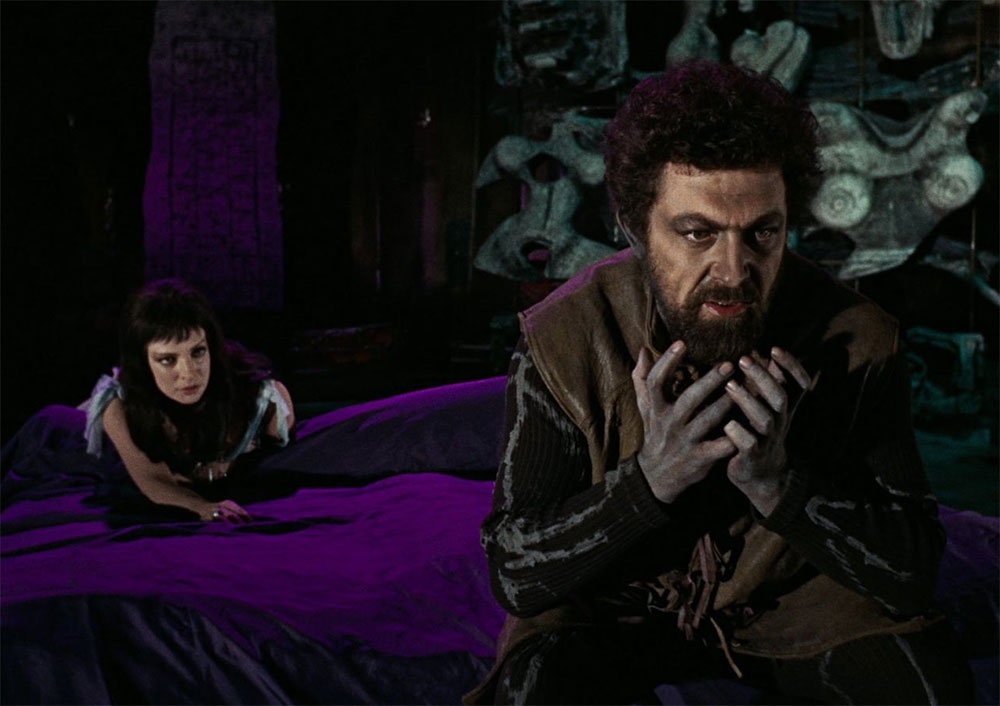When the art director Hein Heckroth invited his previous collaborator Michael Powell to direct an adaptation of Bela Bartok’s famous opera, Duke Bluebeard’s Castle, for West German television, Powell was at a low point in his career. Three years earlier, he had directed the psychosexual thriller Peeping Tom (1960), whose depictions of intrusive violence proved to be wildly controversial. But Peeping Tom was somewhat of a departure for Powell, who had spent the previous four decades directing films with Emeric Pressburger, and two decades before that, filming “Quota Quickies” for the British government. The latter hinted at his interest in the uncanny, as seen in The Phantom Light (1934), as well as his interest in stories about guilt and culpability, as was the case with Her Last Affaire (1935), but because of the British film industry’s demands, he was never able to allot the proper time or resources to these themes during this early stage of his career. Meanwhile, Powell’s partnership with Pressburger produced epochal films like Black Narcissus (1947), The Red Shoes (1948), and The Tales of Hoffmann (1951); the latter two were adaptations of a ballet and an opera, respectively, as well as collaborations with Heckroth. While Peeping Tom seemed like an uncharacteristic detour for Powell at the time, an adaptation of Bluebeard’s Castle (1963) presented itself as a return to form.
Like the original opera, the film centers on the back-and-forth between Bluebeard (Norman Foster) and his fourth wife Judith (Ana Raquel Satre), who first arrives at her husband’s castle and discovers seven doors, each portraying one aspect of her new husband’s psyche and offering her a glimpse of his violence and depravity. The music, the performances, and the set design are emblematic of Judith’s curiosity and fear, as well as Bluebeard’s mysterious nature. Heckroth’s set design channels the visual language of Fritz Lang and F. W. Murnau, with incongruous geometric shapes making up the backdrops of the castle’s rooms, all of which are lined with abstract sculptures that cast bizarre shadows on all that stands before them. Severe lighting marks the emotional dynamism on-screen, with the chiaroscuros cementing the polarity between vulnerability and agency, excitement and dread.
Through Judith and Bluebeard’s ill-fated romance, Powell weaves a magical tale of love and isolation, suggesting that to know someone fully one must be tainted, if not fully overcome, by their darkness. He pinpoints the tragedy as the fateful meeting point between our desire to be known and our desire to conceal our darkest nature—the moment when a gold-tinged room of wonder transforms into a cage.
Bluebeard’s Castle screens this afternoon, July 29, at the Museum of Modern Art as part of the series “Cinema Unbound: The Creative Worlds of Powell and Pressburger.”
gd2md-html: xyzzy Mon Jul 29 2024



